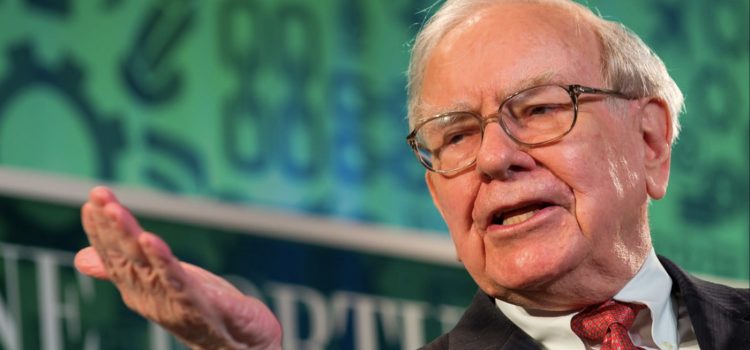

This article is an excerpt from the Shortform book guide to "The Snowball" by Alice Schroeder. Shortform has the world's best summaries and analyses of books you should be reading.
Like this article? Sign up for a free trial here.
Who is a part of Warren Buffett’s family? Who is Warren Buffett married to?
A big part of Warren Buffett’s life is not only accumulating wealth, but also building a family. According to The Snowball by Alice Schroeder, Buffett’s aspiration to have a family stemmed from his difficult childhood.
Let’s look at the many ways Warren Buffett built a family throughout his life.
Accumulating People: Finding a Family
Warren Buffett’s family starts with his childhood, but he always strived for more relationships. Despite Buffett’s longing for independence, he spent his life accumulating friends as much as he spent it making money. Schroeder hints that because of Buffett’s lack of emotional connections in childhood, he spent his adult life forging intense relationships with others. Of the many people drawn to Buffett, several stand out in particular: his wife, Susie Thompson Buffett; his business partner Charles Munger; his close companion Katharine Graham; and tech giant Bill Gates.
Growing up, Buffett was awkward with women, but in 1950 he fell for Susie Thompson. Buffett studied public speaking in the hope of overcoming his awkwardness with women, and when that didn’t work he wooed her parents instead. Schroeder claims that it was Buffett’s vulnerability that finally won Susie over. She had an urge to take care of others, and she wanted to give him the love and support he’d never received as a child. They married in 1952 and had three children: Susan, Howard, and Peter. Buffett and Susie made it a point to raise their children to not take money for granted. Buffett promised to pay for their education, but not to give them the easy trust fund life that other children of the wealthy enjoyed.
(Shortform note: In a 2013 interview with CNN, Buffett said that Susie “helped him grow up” from a time in which he didn’t have a good opinion of himself. In Getting the Love You Want, Harville Hendrix and Helen LaKelly Hunt explain that people unconsciously seek out romantic partners whose traits balance those that are repressed within themselves. However, Hendrix and Hunt also point out that the very characteristics that bring people together—for example, Buffett’s need to be mothered—are the same ones that eventually drive them apart.)
By the ’70s, Susie grew depressed about the state of their marriage, feeling that while she cared for Buffett’s needs, he failed to acknowledge hers. However, she didn’t want a divorce. Instead, she moved to San Francisco and arranged for her friend Astrid Menks to cook and clean for Buffett in Nebraska, taking over Susie’s homemaking duties. Schroeder claims that Susie convinced Buffett this wasn’t a separation, but once it sank in that their marriage was over, Buffett was devastated and blamed himself completely. He and Susie still spoke on a regular basis and appeared together at public functions. Astrid kept a low profile so as not to spoil the public illusion that Buffett and Susie were together.
(Shortform note: Despite Buffett’s public persona as an embodiment of traditional Midwestern values, his continued marriage with Susie was anything but usual. Buffett’s daughter Susan praised her parents’ marital arrangement as something that allowed them both to be happy and pursue the lives they wanted. Unlike the stereotypical marriage of convenience in which couples stay together for the sake of their children or financial stability, Buffett and Susie continued to support and love each other from afar.)
Of all the people in Buffett’s ever-growing network, there was one who’d become like a surrogate brother. In 1959, Buffett met Charles Munger, a California lawyer who shared many of his values, including his drive for financial independence. Munger and Buffett clicked right away, and Munger built his own network of partners based on Buffett’s model. After Buffett dissolved his other partnerships, he and Munger became inseparable friends, to the point that they could finish each other’s thoughts.
(Shortform note: More than merely being Warren Buffett’s shadow, Charles Munger is a respected financial giant in his own right. Munger, the author of Poor Charlie’s Almanack, occasionally clashed with Buffett about business decisions, such as whether to invest in Costco or electric car maker BYD. Munger has recently made a name for himself as an outspoken critic of cryptocurrency, using much more colorful language to describe it than Buffett ever would.)
While Buffett’s marriage to Susie was breaking down in the ’70s, he formed an intense emotional bond with Katharine Graham, publisher of The Washington Post. He approached her about investing in her paper, and though she distrusted him at first, she was quickly taken in by his authenticity. Graham introduced Buffett to the ways of high society, while he mentored her on business and public speaking. Schroeder writes that they shared the bond of having been raised by abusive mothers and that they grew so emotionally close that many friends assumed they were having an affair.
(Shortform note: Despite Buffett and Graham’s relationship being described as flirtatious, there’s no evidence that they were anything more than close friends. In her memoir Personal History, Graham downplays Buffett’s role to that of a trusted financial adviser. It may be more accurate to describe them as “work spouses,” close friends who relate over aspects of their careers in ways that their other loved ones cannot. Studies have shown that nearly half the people in the workforce have had such close relationships at one time or another.)
After finding a brother in Charles Munger and a work spouse in Katharine Graham, Buffett met Bill Gates, a young man like-minded enough to carry his legacy as an intellectual son. He met Gates in 1991, and though Buffett was leery of tech companies, he connected with Gates’s intensity of focus. They shared many ideas on business, and Buffett saw Gates as someone he could mentor. Beyond that, says Schroeder, Buffett was impressed by the efficiency of Gates’s charitable foundation. Buffett needed somewhere to channel his money after his death, and in Gates he found someone he trusted to be the steward of his wealth.
(Shortform note: Reflecting on their friendship, Bill Gates said in 2019 that he still looks on Buffett as a father figure, often asking himself when facing difficulties, “What would Warren do?” For Buffett’s 92nd birthday in 2022, Gates posted a series of photos on Instagram to commemorate their time together. The Wall Street Journal did the same, highlighting their joint commitment to philanthropy.)
Personal Loss
The inevitable tragedy of Buffett’s long life was that of outliving the people he loved. In 2001, Katharine Graham collapsed and later died from an injury to her head. Susie, still acting as Buffett’s emotional caretaker, helped him through his period of grief. However, two years later, Susie herself was diagnosed with oral cancer. For the first time, it was Buffett’s job to take care of her, and Schroeder writes that the emotional shock was nearly more than Buffett could bear.
Nevertheless, Buffett supported his wife through her painful recovery. When Susie passed away in 2004, Buffett mourned her in seclusion for months. However, Schroeder notes that once Buffett eased back into his daily life, he began to shoulder more of his family and friends’ emotional needs. In 2006, Buffett married his longtime caregiver Astrid Menks, at last making their relationship public.
Buffett and Mortality
There are many different types of grief, and Graham’s and Susie’s deaths three years apart affected Buffett in different ways. Graham’s unexpected death came as a traumatic loss that brought with it a double dose of grief—that of the loss itself, and that of its unexpected nature. Susie’s was different in that her illness brought with it a sense of anticipatory grief—that in which someone mourns a loved one’s suffering before they’re even gone.
While Buffett was unprepared for the passing of his loved ones, he now says he’s at peace with the thought of his own mortality. And while many of his investors are worried about what will happen to his brand after his death, Buffett is confident that Berkshire Hathaway will be able to carry on without him.

———End of Preview———
Like what you just read? Read the rest of the world's best book summary and analysis of Alice Schroeder's "The Snowball" at Shortform.
Here's what you'll find in our full The Snowball summary:
- A biography of one of the wealthiest people in the world, Warren Buffett
- Why Buffett is known for his honesty and wisdom, just as much as his wealth
- How Buffett's life was shaped by his family, his teachers, and the era into which he was born






